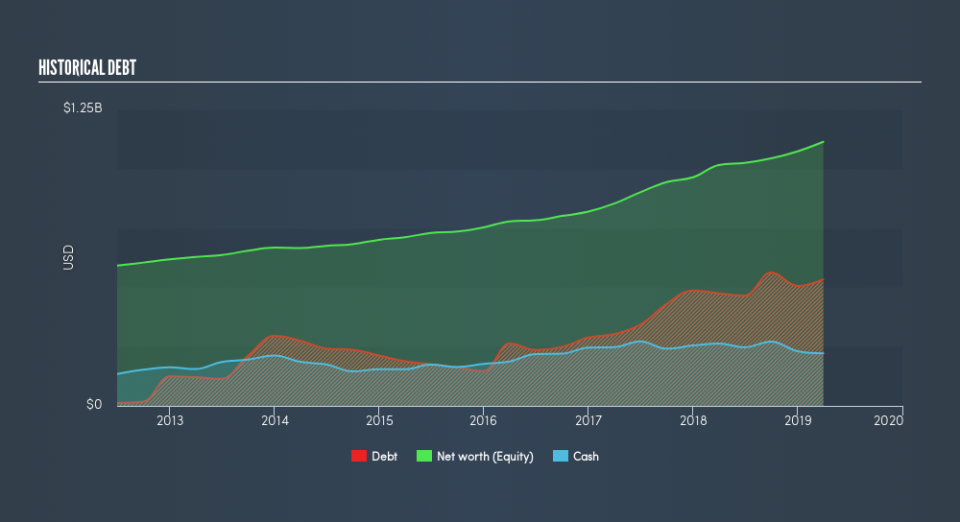Does II-VI Incorporated's (NASDAQ:IIVI) Debt Level Pose A Problem?

Small-cap and large-cap companies receive a lot of attention from investors, but mid-cap stocks like II-VI Incorporated (NASDAQ:IIVI), with a market cap of US$2.4b, are often out of the spotlight. Despite this, commonly overlooked mid-caps have historically produced better risk-adjusted returns than their small and large-cap counterparts. Today we will look at IIVI’s financial liquidity and debt levels, which are strong indicators for whether the company can weather economic downturns or fund strategic acquisitions for future growth. Note that this information is centred entirely on financial health and is a top-level understanding, so I encourage you to look further into IIVI here.
Want to participate in a short research study? Help shape the future of investing tools and you could win a $250 gift card!
View our latest analysis for II-VI
IIVI’s Debt (And Cash Flows)
Over the past year, IIVI has ramped up its debt from US$475m to US$533m , which includes long-term debt. With this increase in debt, the current cash and short-term investment levels stands at US$221m to keep the business going. Moreover, IIVI has produced US$161m in operating cash flow in the last twelve months, resulting in an operating cash to total debt ratio of 30%, indicating that IIVI’s current level of operating cash is high enough to cover debt.
Can IIVI pay its short-term liabilities?
With current liabilities at US$240m, it seems that the business has been able to meet these obligations given the level of current assets of US$817m, with a current ratio of 3.41x. The current ratio is the number you get when you divide current assets by current liabilities. However, a ratio above 3x may be considered excessive by some investors, yet this is not usually a major negative for a company.
Can IIVI service its debt comfortably?
IIVI is a relatively highly levered company with a debt-to-equity of 48%. This is not uncommon for a mid-cap company given that debt tends to be lower-cost and at times, more accessible. We can test if IIVI’s debt levels are sustainable by measuring interest payments against earnings of a company. Ideally, earnings before interest and tax (EBIT) should cover net interest by at least three times. For IIVI, the ratio of 7.46x suggests that interest is appropriately covered, which means that lenders may be inclined to lend more money to the company, as it is seen as safe in terms of payback.
Next Steps:
IIVI’s high cash coverage means that, although its debt levels are high, the company is able to utilise its borrowings efficiently in order to generate cash flow. This may mean this is an optimal capital structure for the business, given that it is also meeting its short-term commitment. This is only a rough assessment of financial health, and I'm sure IIVI has company-specific issues impacting its capital structure decisions. I recommend you continue to research II-VI to get a better picture of the mid-cap by looking at:
Future Outlook: What are well-informed industry analysts predicting for IIVI’s future growth? Take a look at our free research report of analyst consensus for IIVI’s outlook.
Valuation: What is IIVI worth today? Is the stock undervalued, even when its growth outlook is factored into its intrinsic value? The intrinsic value infographic in our free research report helps visualize whether IIVI is currently mispriced by the market.
Other High-Performing Stocks: Are there other stocks that provide better prospects with proven track records? Explore our free list of these great stocks here.
We aim to bring you long-term focused research analysis driven by fundamental data. Note that our analysis may not factor in the latest price-sensitive company announcements or qualitative material.
If you spot an error that warrants correction, please contact the editor at editorial-team@simplywallst.com. This article by Simply Wall St is general in nature. It does not constitute a recommendation to buy or sell any stock, and does not take account of your objectives, or your financial situation. Simply Wall St has no position in the stocks mentioned. Thank you for reading.

